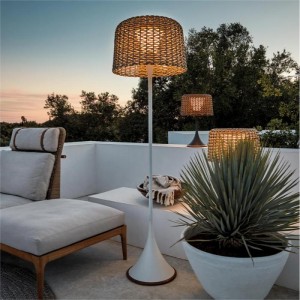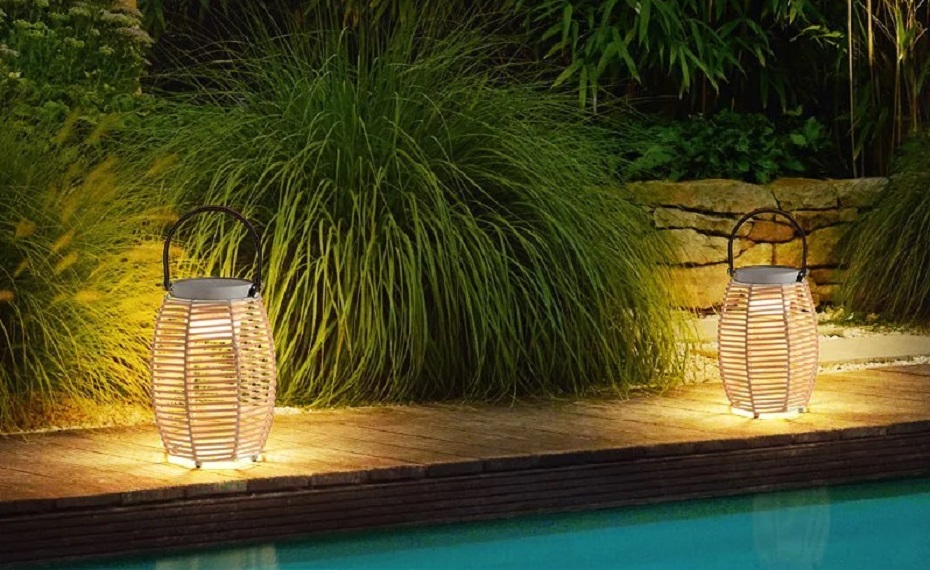Solar lanterns are an environmentally friendly lighting device that uses solar energy as an energy source. As the global demand for renewable energy increases, solar lanterns are becoming more and more popular in the field of outdoor lighting. Not only are they energy-saving, they also reduce dependence on electricity resources, making them ideal for outdoor patios, gardens, and camping. This article will delve into the working principles of solar lanterns to help readers better understand their technical details and how they operate.

1. Components of a solar lantern
1.1 Solar Panels
Solar panels are one of the core components of solar lanterns and are responsible for converting sunlight into electrical energy. Through the photovoltaic effect, the panels hit the photons in sunlight onto the semiconductor material, generating the flow of electrons and thus generating electric current. The efficiency of the solar panel directly affects the performance and charging speed of the lantern. Common panel materials include monocrystalline silicon, polycrystalline silicon and thin film.
1.2 Rechargeable Batteries
Rechargeable batteries are energy storage devices for solar lanterns. They are charged by solar panels during the day and power the LED light source at night. Common types of rechargeable batteries include nickel metal hydride batteries (NiMH), lithium ion batteries (Li-ion) and lithium iron phosphate batteries (LiFePO4). Different types of batteries vary in charging speed, capacity and service life, so choosing the right battery type is crucial to the performance of solar lanterns.
1.3 LED light source
LED light source is an efficient and low-energy lighting method, which is very suitable for solar lanterns. Compared with traditional incandescent and fluorescent lamps, LED lamps have longer service life and lower energy consumption. In addition, LED lights have high luminous efficiency and can operate at lower voltages, making them ideal for solar lanterns.
1.4 Controller
The controller manages and regulates the current in the solar lantern. It can automatically detect changes in ambient light and control the lantern's on and off. General controllers also have overcharge and over-discharge protection functions to ensure the safe use of rechargeable batteries. Advanced controllers may also include a timer switch function to further optimize energy utilization.
2. How Solar Lanterns Work
2.1 Daytime Charging Process
During the day, solar panels absorb sunlight and convert light energy into electrical energy, which is stored in rechargeable batteries. During this process, the efficiency of the panels and the intensity of sunlight determine the charging speed of the battery. Generally, areas with sufficient sunlight are able to fully charge the battery in a short time.
2.2 Energy Storage and Conversion
The energy storage process of solar lanterns involves converting light energy into electrical energy and storing it in rechargeable batteries. This process is completed by the solar panels. The controller then detects the battery charge to prevent overcharging and battery damage. At night or when there is insufficient light, the controller automatically converts the stored electrical energy into light energy to light up the LED light.
2.3 Nighttime Discharge Process
When the ambient light weakens to a certain extent, the controller detects this change and automatically starts the lantern's discharge process to light up the LED light source. During this process, the electrical energy stored in the battery is converted into light energy to illuminate the surrounding environment. The controller can also adjust the brightness of the LED to extend the lighting time or provide light sources of different brightness as needed.
If You Are in Business, You May Like
3. Factors Affecting Solar Lantern Performance
3.1 Light Intensity and Duration
The charging efficiency of a solar lantern is directly affected by the intensity and duration of light. In areas with low light intensity or short sunshine hours, the charging effect of the lantern may be limited, resulting in a shorter lighting time at night. Therefore, when choosing a solar lantern, it is necessary to consider the local lighting conditions and choose an efficient solar panel.
3.2 Battery Capacity and Service Life
The capacity of the battery determines the energy storage capacity and nighttime lighting time of the solar lantern. Batteries with larger capacity can store more electricity, thus providing longer lighting. At the same time, the service life of the battery is also an important consideration. Choosing a durable battery type can reduce the frequency of replacement and reduce maintenance costs.
3.3 Efficiency of Solar Panels
The efficiency of the solar panel directly affects the overall performance of the lantern. Efficient panels can generate more electricity under the same sunshine conditions, thereby increasing the charging speed and the use time of the lantern. To improve the efficiency of the solar panel, you can choose high-quality materials and clean the panels regularly to avoid the accumulation of dust and dirt.
3.4 Ambient temperature and humidity
Ambient temperature and humidity will also affect the performance of solar lanterns. In high or low temperature environments, the battery's charge and discharge performance may decline, which will affect the lantern's service life. At the same time, a high humidity environment may cause a short circuit or component damage inside the lantern, so it is necessary to choose a solar lantern with good waterproof performance to adapt to various adverse weather conditions.
Solar lanterns are an ideal choice for outdoor lighting due to their energy-saving and environmentally friendly characteristics. By understanding their working principles and the various factors that affect performance, consumers can better choose and use solar lanterns to achieve longer service life and more efficient lighting effects.
With the continuous advancement of technology, the application prospects of solar lanterns will be broader and are expected to contribute more to sustainable development.
Here, please allow me to introduce our solar lanterns to you. XINSANXING Lighting is a leading manufacturer of outdoor solar lanterns in China. Our products are not just traditional lanterns. After years of development and practice, we combine traditional weaving craftsmanship with solar technology to innovate new-era artistic lighting products. We are the earliest R&D in China and have many product patents to protect your sales.
At the same time, we support customized services. Cooperating with us will enjoy the factory price without worrying about the price increase of middlemen, which will directly affect your sales effect and actual profit.
You don’t need to worry about the quality. We have a strict inspection process to ensure that each product is 100% tested before delivery, and the comprehensive defective rate is less than 0.1%. This is our most basic responsibility as a manufacturer.
Post time: Aug-13-2024










